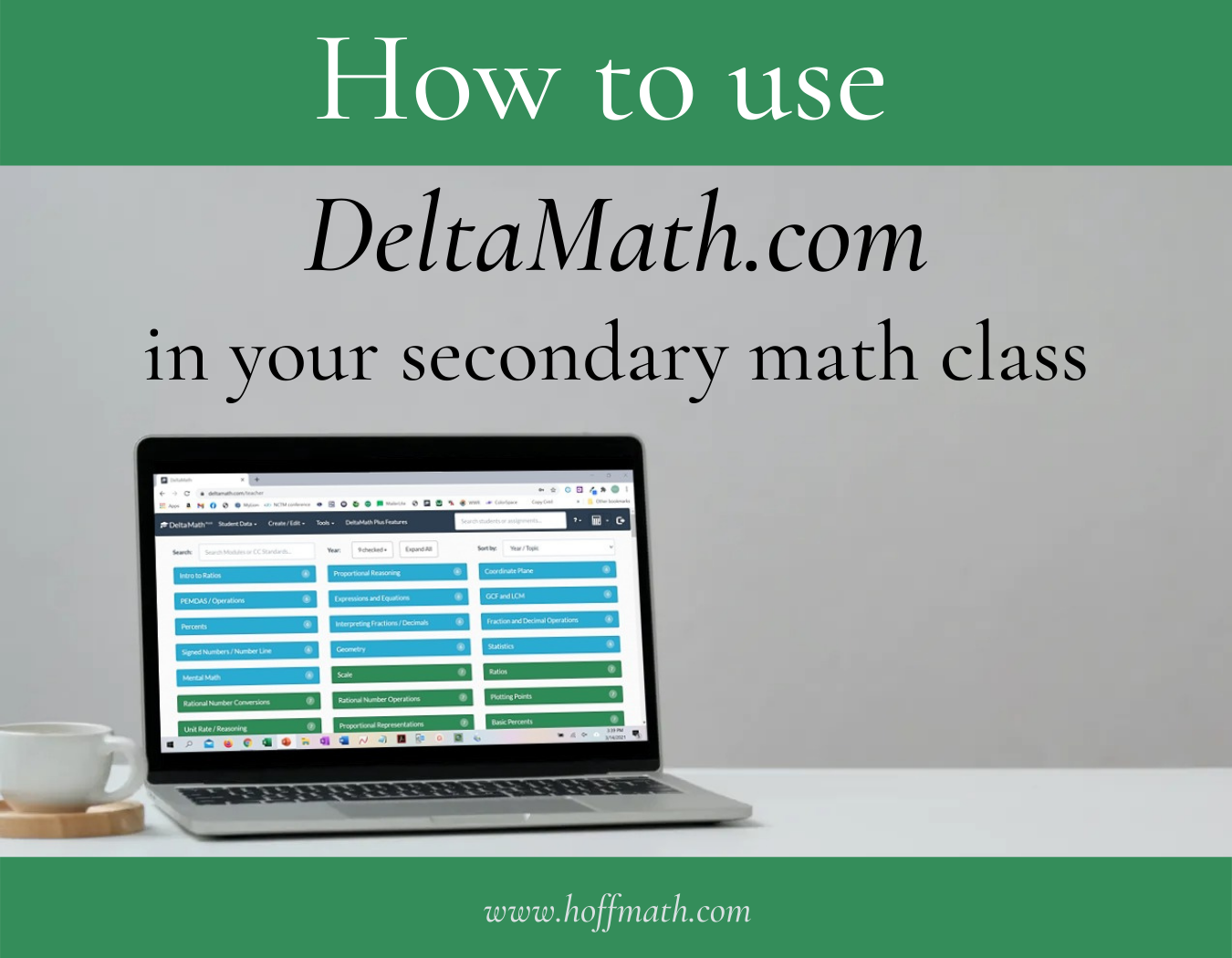If you’re looking for a math app that can keep your students motivated, you should check out DeltaMath. The teacher-created math platform focuses on personalized instruction and has more user-friendliness than Khan Academy. It also aims to minimize the use of on-screen cheating on high-stakes tests. But what should you expect from a math app? Read on to discover whether DeltaMath is right for your child.
Delta Math is a teacher-created math platform
DeltaMath is an online math content platform, designed and maintained by teachers. It has thousands of problem sets and explains how to solve them in detail. It can be used by students and teachers and is available for free. If you wish to make a donation through PayPal, you can do so. However, if you do not wish to donate, the platform does have a few features that you might find useful.
For example, DeltaMath allows teachers to create problems that are specific to their course. Students cannot simply repeat problems that are similar to the one they got wrong. This is particularly helpful for individualized assessments for students with special needs. Students can access help videos for each skill in Delta Math. Depending on the topic, a teacher can hide some videos from their students, and also see how much they have watched.
Students must have a valid teacher code to log in. Teachers give students codes and require them to register in the DeltaMath platform. During registration, teachers can hide email addresses from students by choosing non-personally identifiable usernames and nicknames. The teachers can also add or remove students from their classes. Lastly, teachers can also use DeltaMath to assign videos to students. It’s a simple process that allows teachers to manage students in their classroom.
DeltaMath gives teachers numerous ways to monitor student work. Teachers can view a grid of student grades and click on the name of the student to see more information. Each student’s grade can also be timestamped, so it’s easy to see which questions have been solved and which ones need more work. Students can also export their grades to a csv file. This feature is incredibly helpful when it comes to reteaching and remediating.
It provides personalized instruction
Personalized instruction involves a system of mindsets and practices that increase student engagement, mastery, and application of learning materials. Personalized instruction may be delivered in a traditional classroom or a virtual learning environment. The ultimate goal is to make learning more relevant to the learner. This is done by determining which activities students should participate in and what level of mastery is needed. It may be used to address a variety of learning challenges.
Personalized instruction allows students to choose the level of personalization and challenge that they desire for their learning experience. This approach differs from differentiation, which typically involves the teacher controlling most decisions. Blended classrooms combine both methods and allow students to participate in personalization decisions while still allowing teachers to determine how best to meet individual learning needs. This approach also allows students to choose how they spend their time and what goals they have. For example, a teacher may assign students into different groups according to their strengths and weaknesses, whereas a student can set up his or her own goal.
It is more user-friendly than Khan Academy
Khan Academy is a great way to practice math, but it falls short in many aspects. While it does have practice problems, it doesn’t teach students to critically think about math concepts. The best math teachers understand that students can’t become robots. They must understand how to solve problems and be able to apply the concepts they learn. Moreover, Khan Academy is not geared toward higher-level mathematics, which makes it difficult for students to excel in this subject.
One of the most significant disadvantages of Khan Academy is its inability to track student progress. Unlike math tutors, Khan Academy doesn’t let you skip questions, which is essential to measuring progress. Moreover, there are no grades available to determine if a student has learned the math concept. DeLamath is better suited for teachers who need to track student growth and make adjustments. Its creator, Zach Korzyk, tweets as @MrDeltaMath and has a Facebook group, where users can request new skills for the program.
Another notable difference between Khan Academy and DeLamath is the way students are prompted to respond to questions. For example, in Khan Academy, a student is often asked to solve a system of linear equations using a graph. Alternatively, DeLamath prompts students to build tables and draw conclusions from the data. DeLamath is more user-friendly than Khan Academy, and it is much more intuitive to use.
While Khan Academy offers a wealth of lessons, it’s difficult to find a good solution. The videos are usually step-by-step, but they don’t always align with the problem sets. Moreover, students get punished for typing incorrectly. It’s important to realize that Khan Academy is designed for practice and is not a substitute for a classroom. In addition, Khan Academy offers a timely feedback mechanism. Often, it’s easier to repeat a problem if students have trouble solving it the first time.
It reduces on-screen cheating in high-stakes tests
The use of computerized test-response software such as Delamath is reducing on-screen cheating in high-stakings tests, according to the company. Its technology enables teachers to set timers for entire tests and specific questions to limit cheating. The technology is available in more than 20 states, but Colorado’s schools can’t afford it, especially since it’s so expensive. As a result, Colorado’s schools may not purchase it anytime soon. Nevertheless, the superintendent of Jefferson County Schools said she was not aware of any other solution.
It motivates students to practice math outside of school
One important reason why students must practice math is because it is more difficult than reading. Math requires students to switch from one task to another and has many challenges that reading does not. Math practice requires students to spend significant time to reach grade-level competence. Also, the pace and content of math practice is dictated by the school curriculum. For this reason, students often struggle to learn the subject outside of school. It is imperative to provide students with the support and encouragement they need to succeed.
Research shows that students often feel nervous or frustrated when they are assigned math. About half of students find math enjoyable, but over a third feel nervous when they have to do it. Almost half of students consider themselves good or very good at math. Interestingly, more girls than boys believe they are good at math. In fact, a recent survey found that girls are more likely than boys to believe they are good at mathematics.
The finalized MMQ reflects secondary students’ motivation to learn math. It has strong reliability and validity evidence and reveals that motivation varies by demographic background. This has implications for future motivation-based interventions in STEM fields. The MMQ is especially useful in enhancing self-regulation and reducing test-adverseness. This study highlights the positive impact of motivation-based interventions in math learning.
Unlike homework, the 90-minute math practice intervention is presented as a Math Olympics. The participants competed against each other by completing as many problem sets as possible within the allotted time. The resulting competitions incorporated a series of competitions in which student-mentor pairs were paired. During these games, the student-mentor pairs completed math problems that were appropriate for their level of development.










